“They’ve got sharp teeth you know, and they’re pretty strong. They’re not like Australian bottlenose dolphins, these guys are 4 metres long.. Want to get in?” – quote Dr Kevin Robinson when asking me if I wanted to get in the water to try and get the sex of some dolphins. I said yes of course, but this was just many of the wild moments I experienced working with the Cetacean Research and Rescue Unit in Scotland.

Photo by Melinda Brown
Dr Kevin Robinson from the Cetacean Research Rescue Unit (CRRU) is one of the most enthusiastic people I have ever met when it comes to cetaceans. His passion is infectious, inspiring everyone around with ideas when it comes to these illusive mammals, and the secret lives they live. The CRRU is based out of Gardenstown in Scotland, and works with a resident pod of dolphins that roam the coastline of the Moray Firth. Kev knows these dolphins like family. Every fin that popped up on a survey would be followed by squeals of delight by the crew on the boat, but more importantly, Kevin’s voice yelling “that’s Sky, and Kirby is with him. Yep, that’s Lummer as well”, while us ladies scrambled to grab the data sheets and start filling them in.
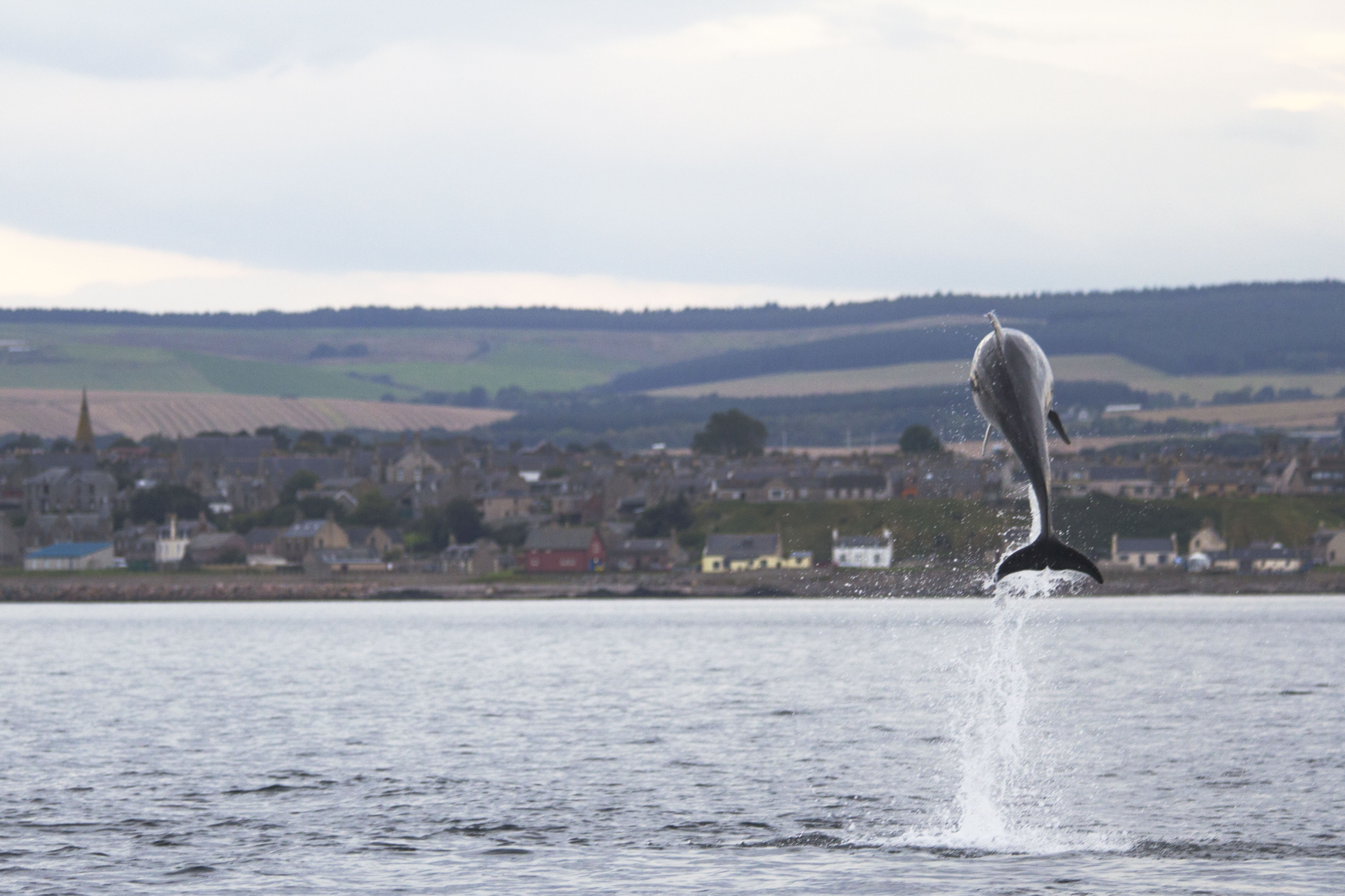
Photo by Melinda Brown
Our days here in Gardenstown were always action packed. Some days we spent in the classroom, learning everything from species ID, too how to load a cross bow for biopsies, too rescue techniques for cetaceans of all shapes and sizes, and other days we spent zooming around the sea in the research boat. The course the CRRU runs is so incredibly comprehensive, but the best part is the constant good vibes and high spirits.
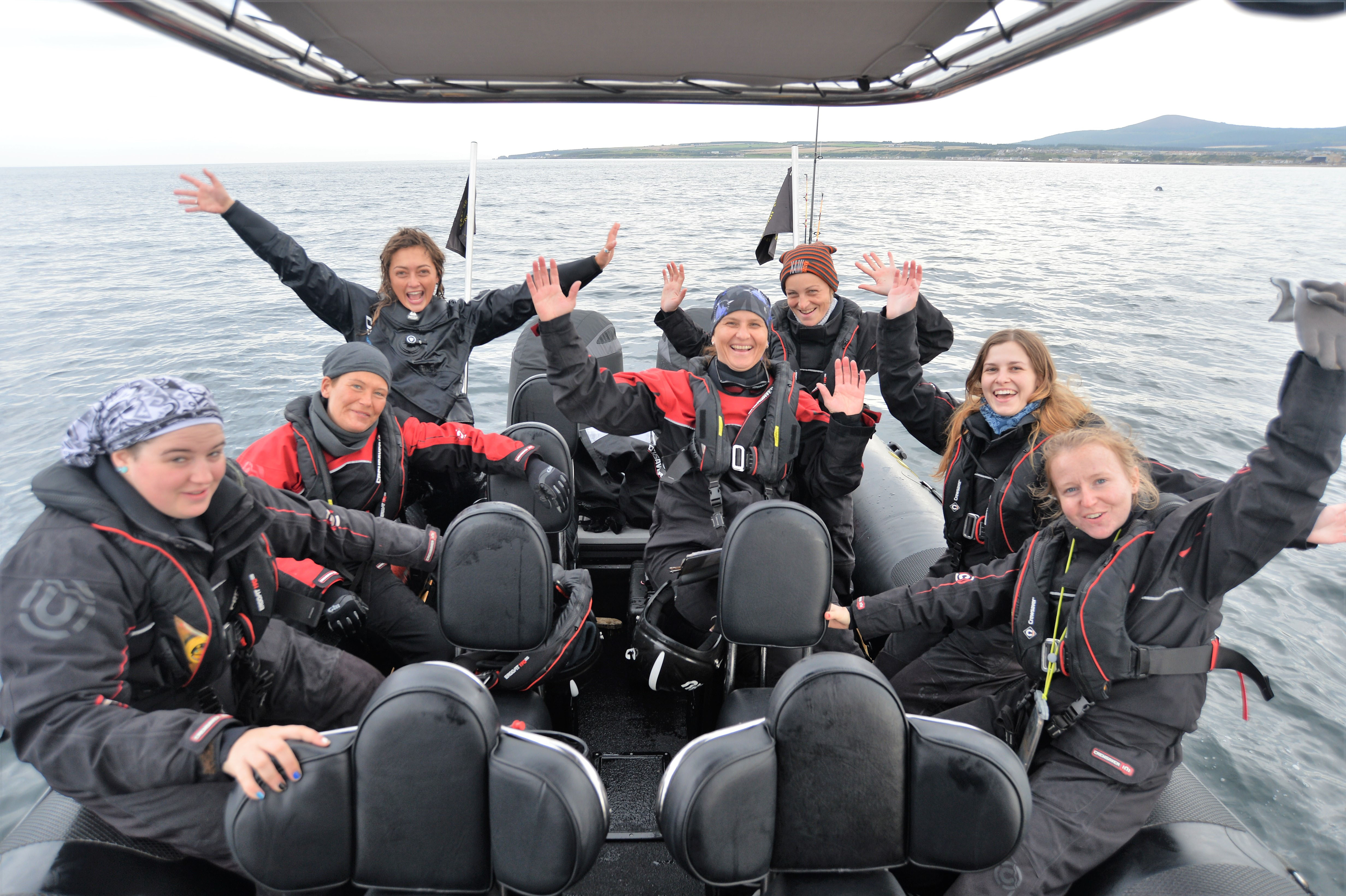
Photo by Kevin Robinson
My First day in Gardenstown was incredibly surreal. The base for the project is on the ‘main street’ that runs along the water front, and is barely big enough for one car to drive down. It’s incredibly quiet here, with no traffic or city noises, only the ocean and the occasional bird cry. Huge green rolling cliffs frame the tiny town, with grass covering the sheer cliffs like velvet, bright in colour but worn thin over areas where the rocks poke through. We spent the morning trying on our boat attire to make sure it fitted ok. This included not only a woolly undergarment, but a dry suit, boots, gloves, beanies, helmets and buffs. I was definitely not prepared to have to wear so much gear just to sit on the boat, but I very quickly realised how much I would need it. Words can’t describe how grateful I am to David Balsom from Tabata for the extra warm Waterproof WARMTEC undergarment he gave me before I left!
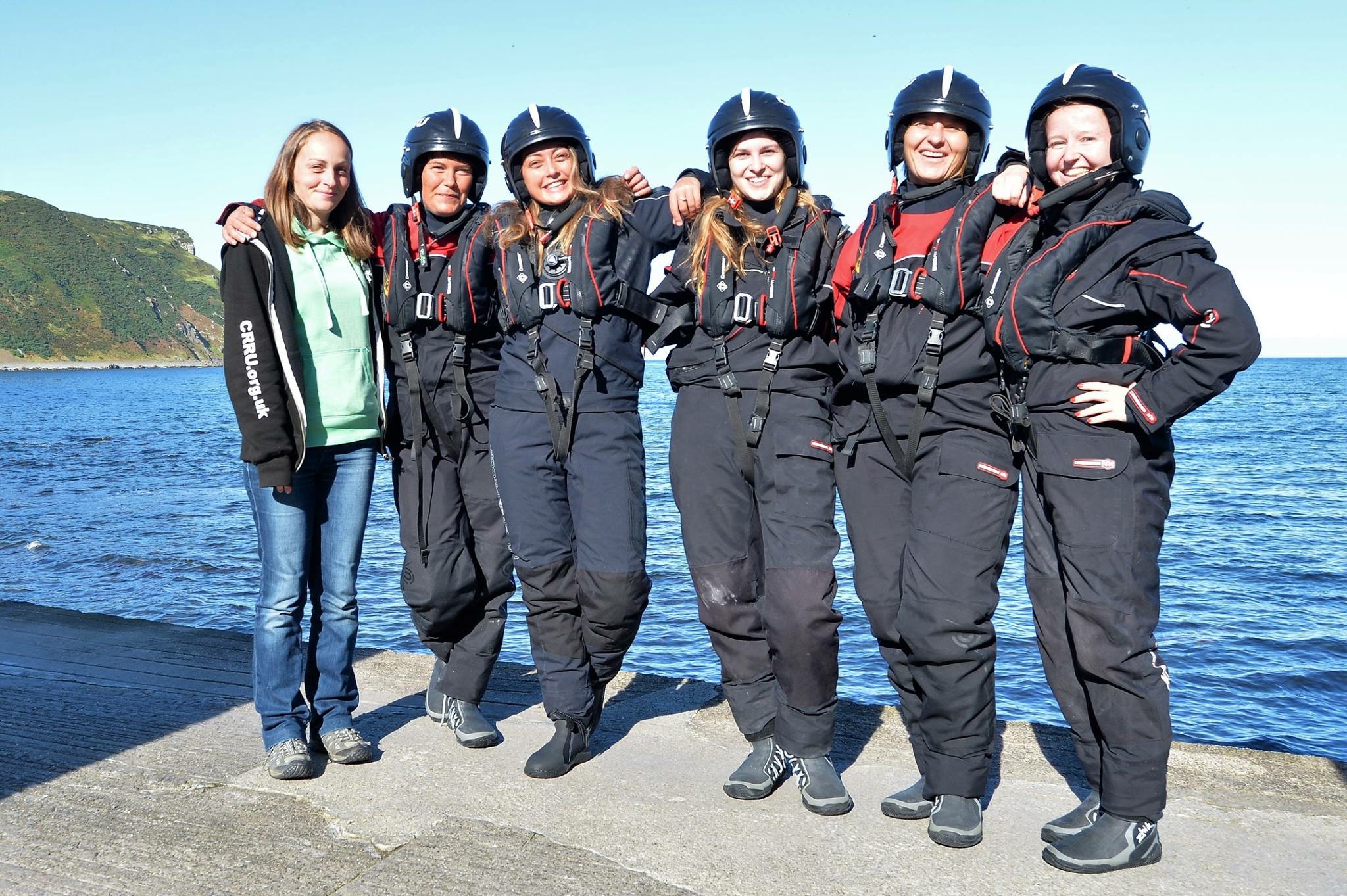
Photo by Kevin Robinson
The CRRU boasts not only an incredible location for the project, but a super cool, shiny, black land rover and an epic black research boat that makes everyone aboard look like they’re part of a gang (when really they’re marine scientists, which is the best type of gang if you ask me). As we left the harbour on that first day with Back in Black by ACDC blaring through the stereo, I knew this was going to be an incredible experience.
We were very lucky on that first day to come across three sub adult bottlenose dolphins. They were more interested in us then I expected. After we all got over screaming ‘dolphins’ at the top of our lungs, we picked up our data sheets and began logging data. The three mischievous young dolphins hung around with us the entire time, checking on us and wrestling with each other. As we moved on in search of more cetaceans we ran into another type of marine mammal.. some seals. I’ve only ever worked with Otariids (eared seals), so seeing Phocids (true seals) up close was a new experience for me. The Grey Seals are an incredibly charismatic species, they appear to be quite nervy, moving into the water whenever we came too close, however as soon as we turned our backs they would pop up behind us, spying on us, tracking our movements.

Photo by Melinda Brown
This was the beginning of the most epic game of hide and go seek I’ve ever played in my life. Hide and go seek with cetaceans and seals is truly something else.
That first day we ran across about 30 harbour porpoises. Now this species is supposed to be quite solitary and elusive, but we managed to find two large groups of them. Harbour porpoises are quite small and quick moving, and blend in beautifully with the ocean. So, trying to spot these little guys and count them was incredibly difficult. We all felt pretty lucky after this first day, so we never expected the second day on the water to be even better.

Photo by Melinda Brown
We spent our second day on the water looking for cetaceans and having absolutely no luck. So after about 7 hours of driving around, we admitted we had lost the game of hide and seek with the whales and dolphins and headed home. Suddenly, Kev yelled WHALE and we all instantly came to life. Again, there was a lot of screaming as we zoomed towards the two feeding minkes we had stumbled across. It took a bit for us to gather our wits, as we all instinctively ran for our cameras, but once we got over our initial excitement we managed to start a focal follow, plotting dive times and location over a 25 minute period. The minkes however, decided they wanted to have a closer look at us and forgot about feeding to check us out. We could see them under the boat on the fish finder, just cruising along with us, probably looking up and wondering what type of whale we were. We were so fortunate to see minkes feeding, even if it was briefly. Minkes lunge feed, which means they herd fish into a ball, then lunge sideways at them with their mouths open wide. Studies suggest that whales show lateralisation of the brain, meaning that they have a preference for one side of their body, just like right or left handedness in humans. 9 out of 10 minke whales prefer their right side when they lunge feed, and will only roll that way. Being able to witness this behaviour was incredible; smelling the minkes exhale blow however, was not. Fun fact about minkes, their exhale breath smells like rotten cabbage.
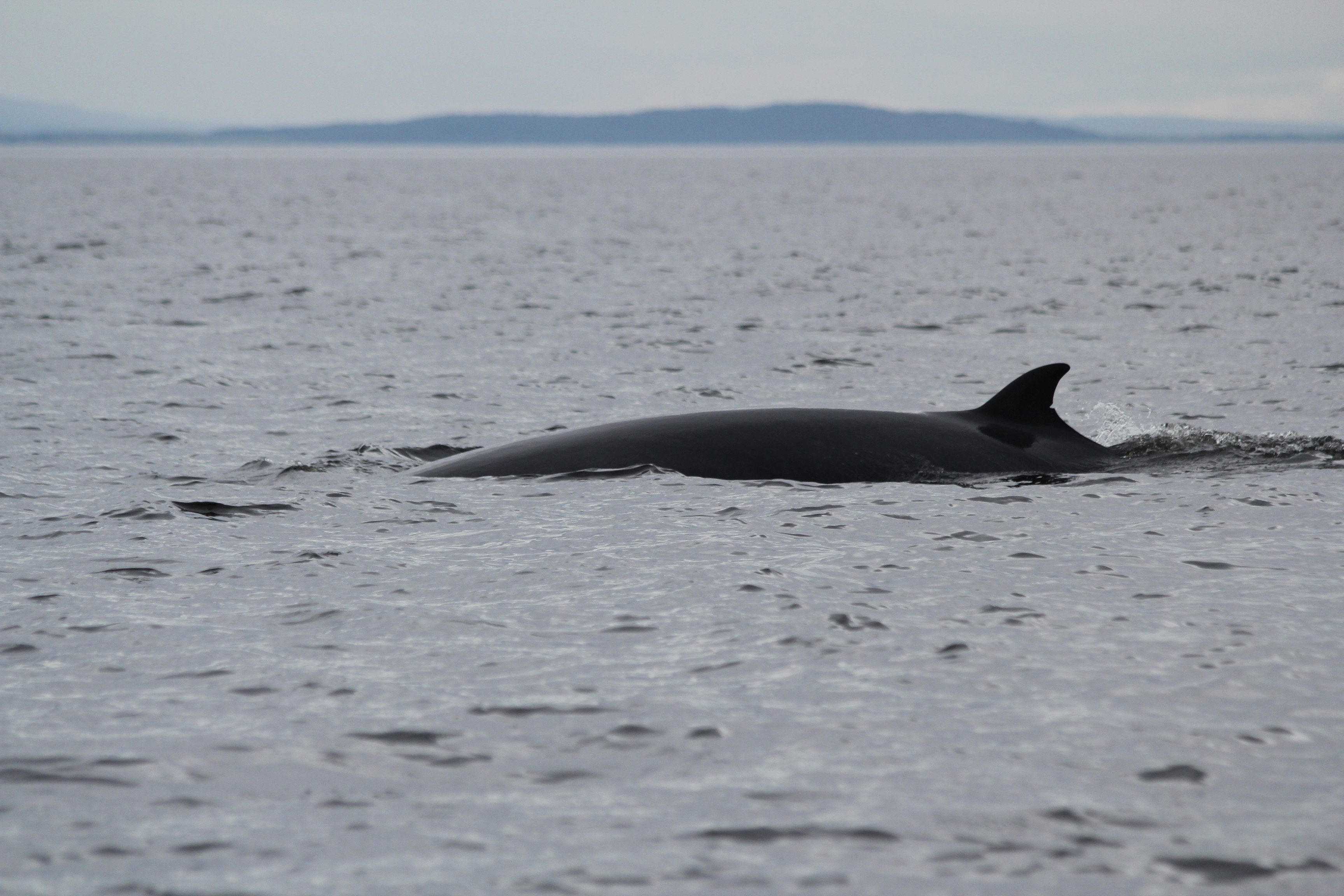
Photo by Melinda Brown
The weather wasn’t as kind as it could have been to us, which meant the visibility in the water wasn’t very good. What would normally have been beautiful blue hues of ocean was a muddy brown, which made spotting animals hard. However, I definitely didn’t complain when Kev asked me if I wanted to jump in to try and get a sex on some dolphins. We weren’t sure how they would react as these dolphins wouldn’t encounter people in the water very often, so I gently slid into the water with my mask and gopro while Sian and Manon held onto me in case the dolphins decided to grab me. Dolphins are often thought of as happy friendly creatures due to their misleading and never ending ‘smile’, however dolphins often live a complicated and dark life, filled with fighting, infanticide and other unmentionable things. With this in mind, I watched the dolphins carefully as they swam past me, checking me out, rubbing against each other with their penis’s out, letting me know I wasn’t part of their gang. They swam below me, blowing bubbles directly underneath my legs so that I was briefly surrounded by bubbles while I hung onto the side of the boat and squealed with laughter.
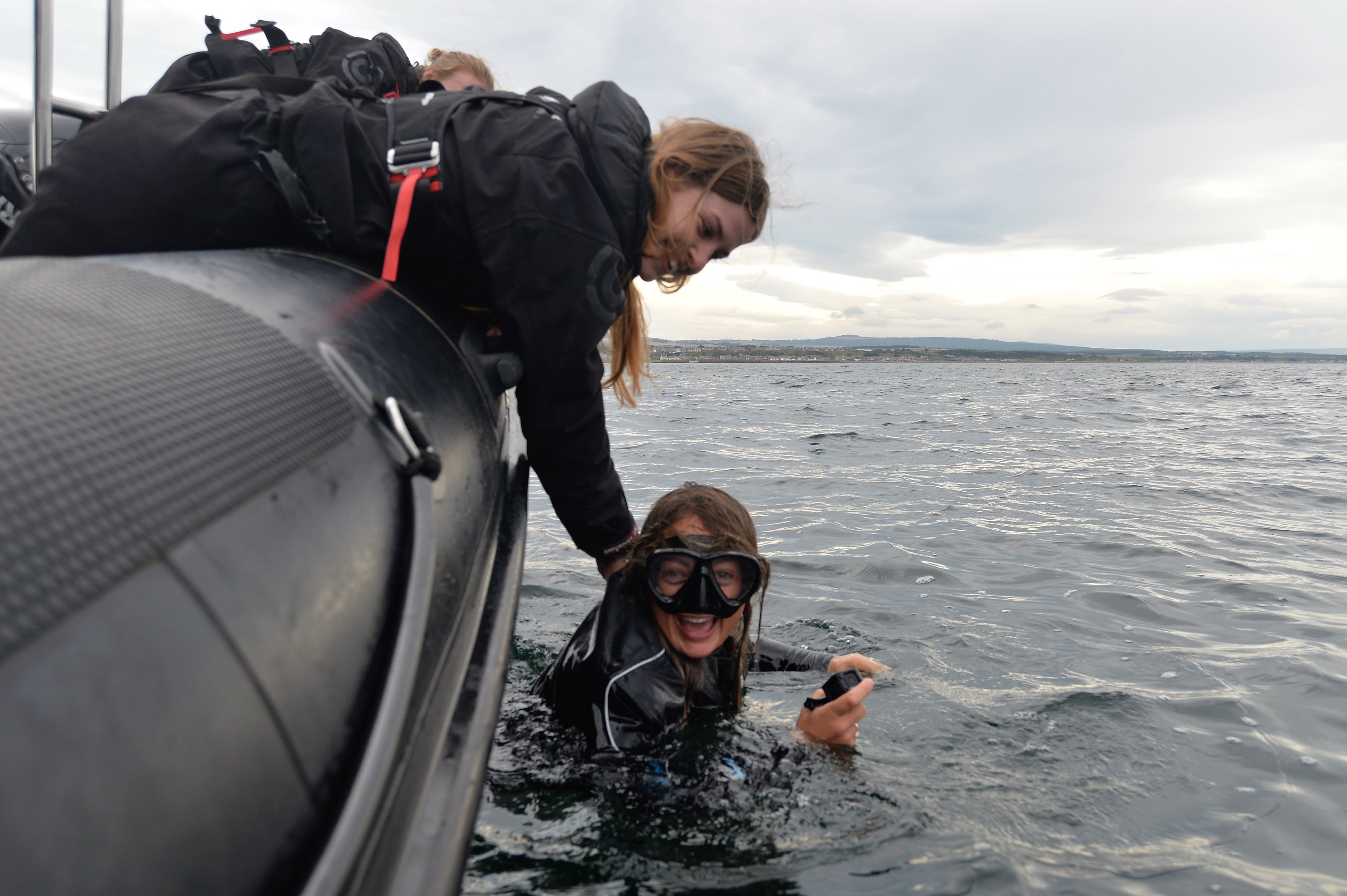
Photo by Kevin Robinson
When we weren’t on the boat or in the classroom, Kev took us girls out and about to explore the country side. One such adventure included going to visit a castle that had some ‘wooly coos’ which I had become completely obsessed with. Every morning I would go for a run in search of those majestic highlander cows and come back disappointed. I think Kevin and the team had become annoyed with my constant chatter about how much I wanted to pat a cow, so when one of the girls on the team, Manon, said her mum had some cows at her castle she lived in (living in a castle? Crazy I know!) we left within the hour to go pat them. I was so ridiculously happy and I can’t thank Manon and her family enough for letting me run wild in their muddy paddocks. Another adventure Kev so kindly indulged in for me was swimming in the Loch Ness. I had joked about it a few times, but everyone knew deep down I was desperate to go. So, on one particularly windy day when we were unable to take the boat out, we drove 6 hours to Inverness, where Sian, Manon and myself put our dry suits on, and jumped in the lake in search of the famous Loch Ness Monster. My scholarship year wouldn’t have been complete without a Loch Ness monster search.
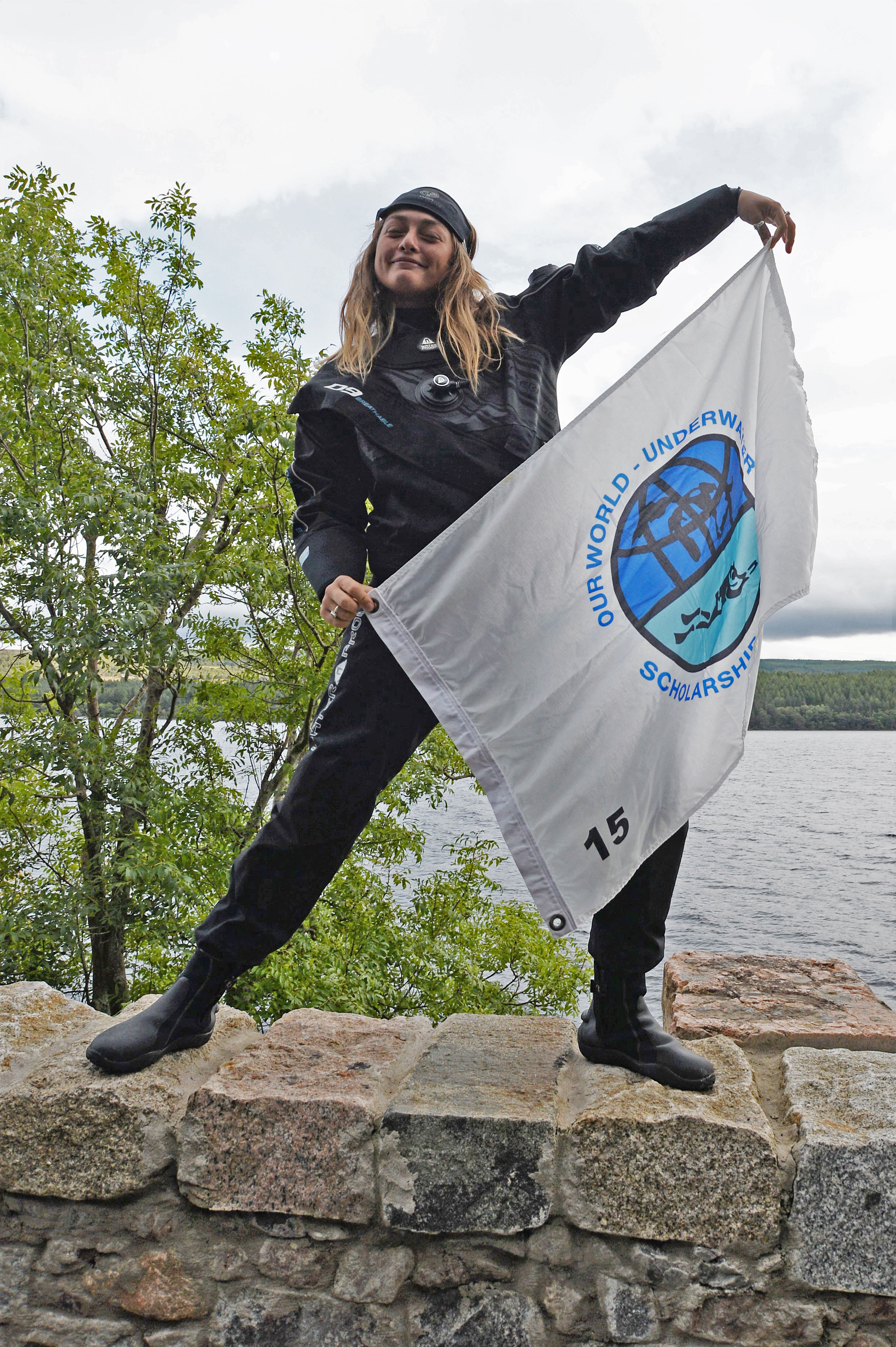
Photo by Kevin Robinson
Before I left CRRU, Kev gave me the opportunity to name one of the new dolphin calves they had documented this season. So, I named the little calf Rolex. I wouldn’t be where I am today without their generosity, and I can’t thank them enough.
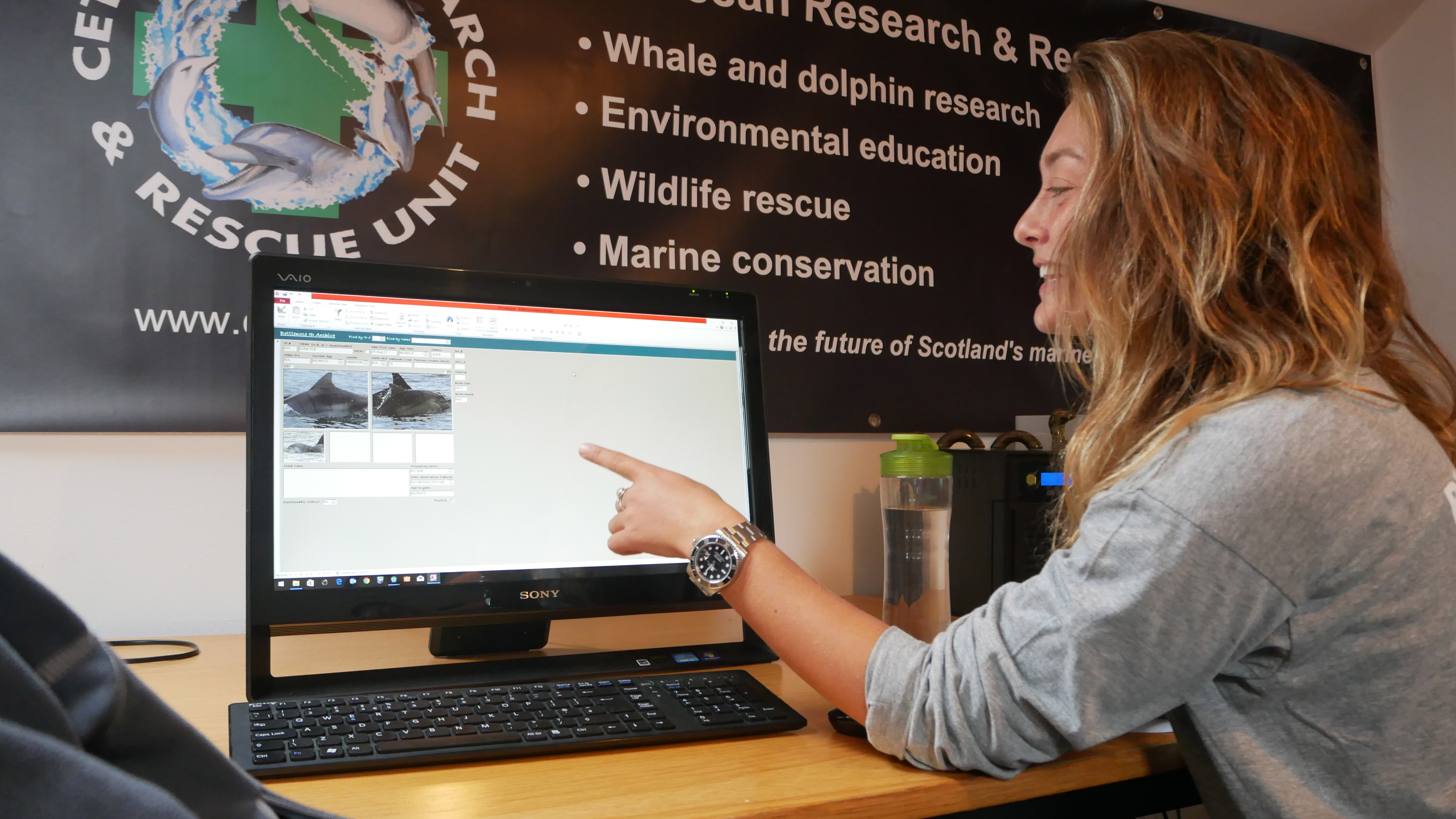
Photo by Kevin Robinson
This course was easily one of the best courses/projects I have ever worked on. The facilities are so incredible, and the staff are even better. I couldn’t think of a better place to get hands-on experience with cetaceans. The CRRU has such a lovely reputation amongst locals, who would sometimes get the word cetacean confused with crustacean, but we didn’t mind, we just nodded and laughed and said ‘yeah that’s us, the crustacean research and rescue team’. I’ve made some incredible friends through this project, and I can’t wait to see you all again next year, because I’ll be back for sure! Thank you for singing songs about seals at dinner with me and listening to dolphin noises remixed into club songs over breakfast. My two weeks here have been nothing short of life changing.

Photo by Kevin Robinson